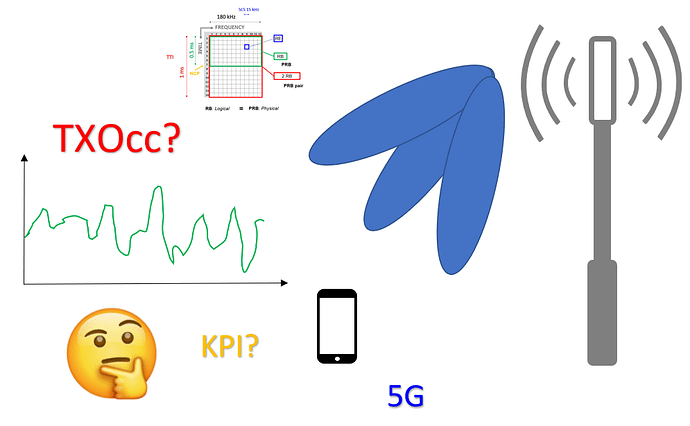In 5G NR (New Radio), TXOcc refers to the transmission occupancy of a physical resource block (PRB) in a radio frame. The TXOcc is used to indicate the portion of a radio frame that is occupied by a transmission on a particular PRB.
In the downlink direction, the TXOcc is defined by the resource allocation type (RAT) and the resource allocation field (RAF) in the physical downlink control channel (PDCCH). The RAT specifies the type of resource allocation, such as localized or distributed, while the RAF specifies the specific PRBs that are allocated for the transmission.
In the uplink direction, the TXOcc is defined by the uplink grant that is sent from the base station to the user equipment (UE) on the physical uplink control channel (PUCCH) or physical uplink shared channel (PUSCH). The uplink grant specifies the PRBs that are allocated for the transmission and the duration of the transmission.
The TXOcc is an important parameter in 5G NR as it affects the overall system capacity and resource utilization. The TXOcc of a PRB is calculated as follows:
TXOcc = (number of symbols in the radio frame) x (number of occupied subcarriers) / (total number of subcarriers per PRB x number of symbols per slot)
where the number of symbols in the radio frame and the number of symbols per slot depend on the subcarrier spacing and slot duration used in the system.
In summary, the TXOcc in 5G NR refers to the transmission occupancy of a PRB in a radio frame, and it is used to indicate the portion of the radio frame that is occupied by a transmission on a particular PRB. The TXOcc is defined by the RAT and RAF in the downlink direction and the uplink grant in the uplink direction. The TXOcc is an important parameter that affects the system capacity and resource utilization.
SSB index and related specifications is 3GPP Release 15.
Credits: ![]()
